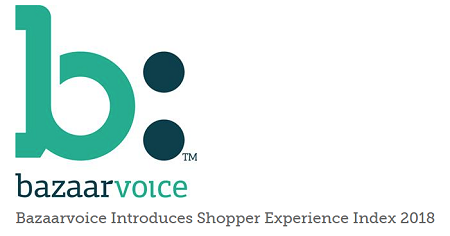Visual content in the shopping experience produces a 111% conversion lift and 180% revenue per visitor (RPV) lift for best-in-class brands and retailers, according to new research.
The Shopper Experience Index, from Bazaarvoice, examines how consumers are engaging and interacting with more than 2,600 websites in the Bazaarvoice Network of brand and retailer domains. Bazaarvoice also surveyed more than 400 brand and retail clients to find out what they’re focused on and investing in over the next two years.
Almost 60% of clients now say that customer pictures and video content is now standard in e-commerce, and 81% state integrating social media and online shopping is a priority for their business.
Joe Rohrlich, EVP and general manager EMEA, Bazaarvoice comments, “The average consumer spends two hours a day on social media platforms, and visual customer generated content acts as a powerful conduit between social platforms and e-commerce. Consumers have embraced features such as shoppable social content, and are coming to expect scrollable galleries of product and lifestyle content alongside the online shopping experience.”
Visual content is becoming increasingly influential
The tide of voice technology will see shoppers explore new ways of ordering and re-ordering from their favourite brands. Despite this, the Shopper Experience Index finds consumers still lean heavily on visual content across social channels to absorb the experiences and behaviours of others and discover the products that people like them are using.
Brands and retailers are therefore turning to more visual content to improve the shopping experience. According the client survey, 80% say visual CGC increases discoverability of products and they either have visual CGC or plan to implement in the next year. Nearly nine in ten (88%) say visual CGC improves brand trust.
As a result 47% of brands and retailers say being able to discover and buy products from social media channels such as Instagram will be more important to shoppers in the next year, and 23% say being able to discover and buy products on social media will be a significant differentiator in the next year.
Accelerating the transition to omnichannel
While 45% of brands and retailers are focused on bringing advanced digital services such as frictionless checkout and geofencing in-store, 50% of clients now say they expect customer content, such as online ratings and reviews or Q&A, to drive offline sales too. This marks a 17% increase in awareness from 2016.
Shopper behaviour validates this expectation: 45% of shoppers read reviews before purchasing products in-store — a 15% year-over-year increase. Joe concludes, “Few brands and retailers are investing in tech for tech’s sake right now. Customer generated content is only just being introduced the offline, in-store, environment in a way that realises its full potential, there is huge room for growth in this area.”
METHODOLOGY
This report draws on analysis of client data from the Bazaarvoice Network of retailers, brands, financial services, and travel websites, spanning more than 943 million shoppers each month. Our analysis is comprised of 5.4 billion product page views each month, and over 61 million pieces of CGC submitted during 2017. The dataset spans more than 2,600 client sites and content in 37 languages. Except where otherwise specified, the data presented throughout this report illustrates best-in-class (75th percentile) performance benchmarks among Bazaarvoice clients.
The timeframe for these benchmarks is calendar year 2017. When relevant, we have
included a 2016 benchmark for comparison purposes.
To complement this study, Bazaarvoice conducted a self-administered online survey of its clients in the United States, Canada, United Kingdom, France, Germany, and Australia from December 14th, 2017 to January 31st, 2018. Overall, more than 400 brand and retail clients were surveyed about how they currently use CGC, how they are prioritizing future e-commerce investments, and what they anticipate will matter to consumers in the coming year.
Source: www.bazaarvoice.com
